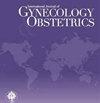The transfer of double cleavage embryos developed from two four-cell embryos may not represent an optimal treatment strategy in cycles with a greater number of four-cell embryos on Day 2
Abstract
Objective
This study examined the impact of the number of Day 2 four-cell (D2-4C) embryos on double embryo transfer and blastocyst culture therapy in the first in vitro fertilization (IVF) cycle.
Methods
A retrospective review was performed on 1039 blastocyst culture cycles to compare outcomes between available and unavailable blastocyst cycles, emphasizing the relationship between the number of D2-4C embryos and blastocyst availability. Furthermore, the correlation between four-cell embryo counts and live births was analyzed in 986 transfer cycles.
Results
The analysis revealed that the number of D2-4C embryos independently influenced the availability of blastocysts (odds ratio [OR] 1.693, 95% confidence interval [CI] 1.306–2.195, P < 0.001). Receiver operating characteristic (ROC) analysis indicated that D2-4C embryos displayed the highest predictive value for available blastocysts, with an area under the curve (AUC) of 0.861 (95% CI 0.826–0.896). The cut-off point was determined to be 4.5, particularly for individuals younger than 25 years, where the AUC reached 0.927. This suggests that the number of D2-4C embryos has significant predictive value for available blastocysts. The live birth rate (LBR) of fresh embryo transfers significantly increased with the number of D2-4C embryos (P = 0.004). LBRs for zero, one, and two four-cell embryos in double cleavage embryo transfer were 20.24%, 34.97%, and 38.08%, respectively (P = 0.005). In the twin group, the percentages for zero, one, and two four-cell embryos were 1.21%, 9.75%, and 89.02%, respectively (P < 0.001). Single blastocyst transfer achieved an LBR comparable to that of two four-cell embryos (34.8% vs 39.0%, P = 0.415), while the twin rate significantly decreased with single blastocyst transfer (25.17% vs 1.40%, P < 0.001).
Conclusion
The number of D2-4C embryos exhibits significant predictive value for available blastocysts, particularly among young women. Furthermore, most twins resulted from the transfer of double cleavage embryos derived from two four-cell embryos. Consequently, when the D2-4C count exceeds four in a cycle, blastocyst culture therapy is preferred over double cleavage-stage embryo transfer.

 求助内容:
求助内容: 应助结果提醒方式:
应助结果提醒方式:


